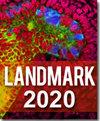开发基于癌症功能状态的新型结直肠癌预后面板,并验证 STC2 是一种有前途的生物标记物
IF 3.1
4区 生物学
Q2 Immunology and Microbiology
引用次数: 0
摘要
背景:改善结直肠癌(CRC)患者的临床预后仍是一项重大挑战。本研究旨在开发一种新的 CRC 预测分类器,并研究其与免疫环境和治疗反应的关系。方法:应用全面的生物信息学分析开发了一个由癌症功能状态相关基因(CFSRGs)组成的风险面板。通过曲线下面积(AUC)和卡普兰-梅耶尔(KM)分析评估了该小组的预后效用。随后利用多组学数据研究了高风险组和低风险组之间的差异。免疫组化(IHC)、定量实时聚合酶链反应(qRT-PCR)和细胞表型检测也被用来确定STC2表达的临床价值。结果:在内部和外部的 CRC 患者队列中,根据我们的 7-CFSRG 面板定义的高风险组和低风险组之间的生存率存在显著差异。在所有队列中,预测 1、3 和 5 年生存率的 AUC 均令人满意。详细分析显示,肿瘤突变负荷、药物敏感性和病理分期与风险评分密切相关。qRT-PCR 实验证实,与正常肠上皮细胞系(NCM460)相比,STC2 在几种 CRC 细胞系(HCT116、SW480 和 LOVO)中的表达显著上调。敲除 STC2 能显著抑制 CRC 细胞的增殖、迁移和侵袭。结论 :我们的 7-CFSRG 面板是评估 CRC 患者预后的一个很有前景的分类器。此外,靶向 STC2 可为改善患者预后提供一种新的治疗方法。本文章由计算机程序翻译,如有差异,请以英文原文为准。
Development of a Novel Prognostic Panel for Colorectal Cancer Based on Cancer Functional Status, and Validation of STC2 as a Promising Biomarker
Background : Improving the clinical outcome of colorectal cancer (CRC) patients remains a major challenge. This study aimed to develop a new predictive classifier for CRC and to examine its relationship with the immune environment and therapeutic response. Methods : A comprehensive bioinformatics analysis was applied to develop a risk panel comprised of cancer function status-related genes (CFSRGs). This panel was evaluated for prognostic utility by Area Under the Curve (AUC) and Kaplan-Meier (KM) analyses. Differences between high-and low-risk groups were subsequently investigated using multi-omics data. Immunohistochemistry (IHC), quantitative real-time polymerase chain reaction (qRT-PCR), and cell phenotype assays were also employed to ascertain the clinical value of STC2 expression. Results : Significant differences were observed in the survival rate between high-and low-risk groups defined by our 7-CFSRG panel, both in internal and external CRC patient cohorts. The AUC for prediction of survival at 1, 3-and 5-years was satisfactory in all cohorts. Detailed analysis revealed that tumor mutation burden, drug sensitivity, and pathological stage were closely associated with the risk score. Elevated expression of STC2 in CRC tissues relative to normal paraneoplastic tissues was associated with less favorable patient outcomes. qRT-PCR experiments confirmed that STC2 expression was significantly upregulated in several CRC cell lines (HCT116, SW480, and LOVO) compared to a normal intestinal epithelial cell line (NCM460). The proliferation, migration, and invasion of CRC cells were all significantly inhibited by knockdown of STC2. Conclusions : Our 7-CFSRG panel is a promising classifier for assessing the prognosis of CRC patients. Moreover, the targeting of STC2 may provide a novel therapeutic approach for improving patient outcomes.
求助全文
通过发布文献求助,成功后即可免费获取论文全文。
去求助
来源期刊

Frontiers in Bioscience-Landmark
生物-生化与分子生物学
CiteScore
3.40
自引率
3.20%
发文量
301
审稿时长
3 months
期刊介绍:
FBL is an international peer-reviewed open access journal of biological and medical science. FBL publishes state of the art advances in any discipline in the area of biology and medicine, including biochemistry and molecular biology, parasitology, virology, immunology, epidemiology, microbiology, entomology, botany, agronomy, as well as basic medicine, preventive medicine, bioinformatics and other related topics.
 求助内容:
求助内容: 应助结果提醒方式:
应助结果提醒方式:


